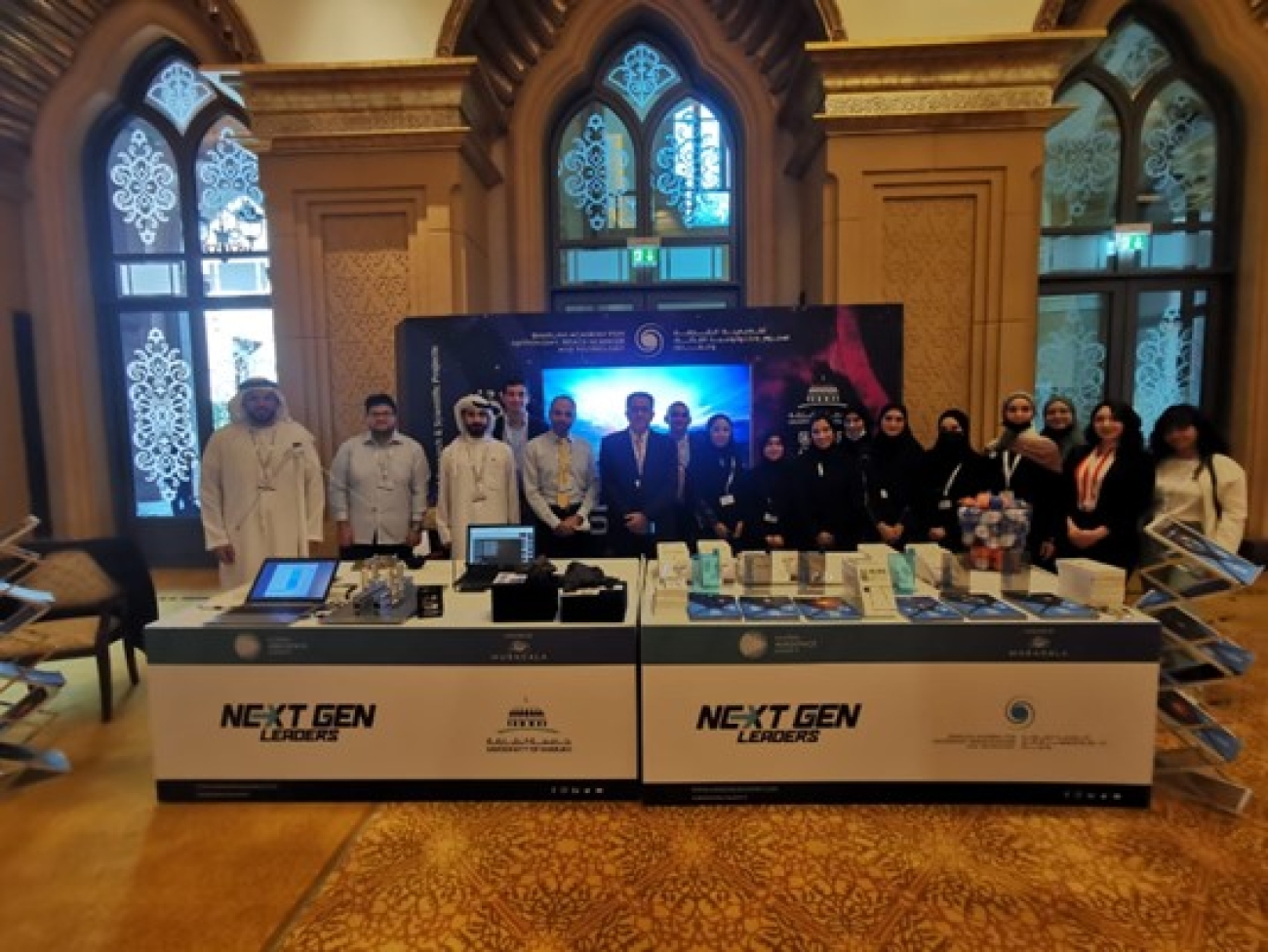- GNSS: Development of a GNSS Simulator: (Sultan Suhail et al.)
This work presents the initial results of a GPS simulator designed by emulating a similar environment (hardware and software) to the GPS satellites. The simulator will enable researchers to test, operate, and experiment on GNSS payloads within a lab environment. It will also help assess some of the most critical errors that GNSS systems experience in space and on the ground, such as satellite clock error, receiver noise, and multipath, which pose different challenges.
- Radio Astronomy: Development of 1-km Radio Interferometer Radio Array: (Abdollah Masud et al.)
Nine identical 5-meter diameter radio telescopes are used to simulate a radio interferometer with a size equivalent to a 1-km dish. The array mirrors the "Y" configuration used by the Karl G. Jansky Very Large Array (VLA) in New Mexico, USA. The system observes the 21 cm neutral Hydrogen line emission at 1420 MHz. The synthesized beam in this configuration measures 0.0114° (41 arcsec), simulating the angular resolution of a 1-km diameter single dish antenna with a collection area equal to a 15-meter diameter dish.
- CubeSat: Design of a SolSat – A Space Weather 3U CubeSat: (Yousuf Faroukh et al.)
SolSat's primary mission objective is to monitor the ionosphere's daily behavior due to the Sun's activities in the Low Earth Orbit (500~600 Km). The secondary mission objective is capacity building in various forms. The primary Payload of the SolSat mission, besides the different operating Bus subsystems (ADCS, EPS, OBC, etc.), is the solar particle detector (SPD) to measure the charge particles' density and energies of electrons, protons, and ions in the energy range of 0.1 - 100 MeV. The operational duration of the mission in space is expected to be 30 months.
- Space Artificial Intelligence: Use of AI in Meteorite Detection: (Aisha Al-Owais et al.)
Artificial Intelligence (AI) techniques have been developed and coupled with an Unmanned Aerial Vehicle (UAV) to facilitate the hunt for meteorites. In addition, a deep learning object detection algorithm known as You Only Look Once (YOLO) was trained on the meteorite collection available at SAASST and terrestrial rocks from the neighboring area.
- Search for Martian Aurora in EMM Data (Meera et al.)
In this research, we inspected the data obtained by the EXI instrument to look for aurora patterns. We hypothesize that our detection and studying of the auroras will allow us further to explain the corrosion of the planet's atmosphere and understand its peculiar magnetic fields. Our approach to
analyzing the data is driven by correlating the auroras with the planet's surface, landscape, and atmosphere. The EXI (Emirates Exploration Imager) is an instrument aboard the hope probe currently circling Mars. It has two detectors that take images in visible and Ultraviolet light. We will be using the ultraviolet data obtained in wavelengths 220 nm and 260 nm.
Several SAASST research assistants and engineers and seven students from the University of Sharjah attended the summit:
Researchers:
- Ilias Fernini – DGD Research Laboratories
- Antonios Manousakis – High Energy Astrophysics Laboratory
- Aisha Al-Owais – Space Artificial Intelligence Laboratory
- Noora Al-Ameri - High Energy Astrophysics Laboratory
- Yousuf Faroukh – CubeSat Laboratory
- Mohamed Rihan – Radio Astronomy Laboratory
- Sultan Suhail – Space Weather & Ionopsheric Laboratory
- Amel Mohamed Ali Mohamed Alhammadi – CubeSat Laboratory
- Fatima Mohammed Abdalla Binghurair Alketbi – CubeSat Laboratory
- Tarifa Al-Kaabi – CubeSat Laboratory
- Maryam Al-Ansari – CubeSat Laboratory
- Maryam Essa Sharif – Meteorite Center
- Maryam Al-Qasemi - High Energy Astrophysics Laboratory
- Ibrahim Al-Sabt – CubeSat Laboratory
Students:
- Ismail Abbas Zein – Radio Astronomy Lab
- Sarra Ghali – Space Artificial Intelligence Lab
- Maha Serdaneh – Space Artificial Intelligence Lab
- Leen Binch – UoS Applied Physics & Astronomy Dept.
- Hassan Haboub – UoS Applied Physics & Astronomy Dept.
- Sahar Naser Sowdagar – Space Weather & Ionospheric Lab.
- Manar Abusirdaneh – Space Weather & Ionospheric Lab.



